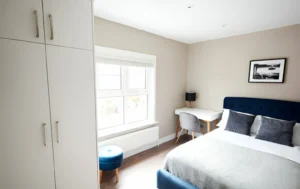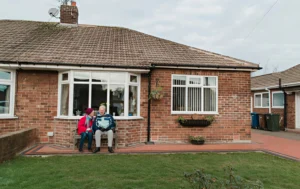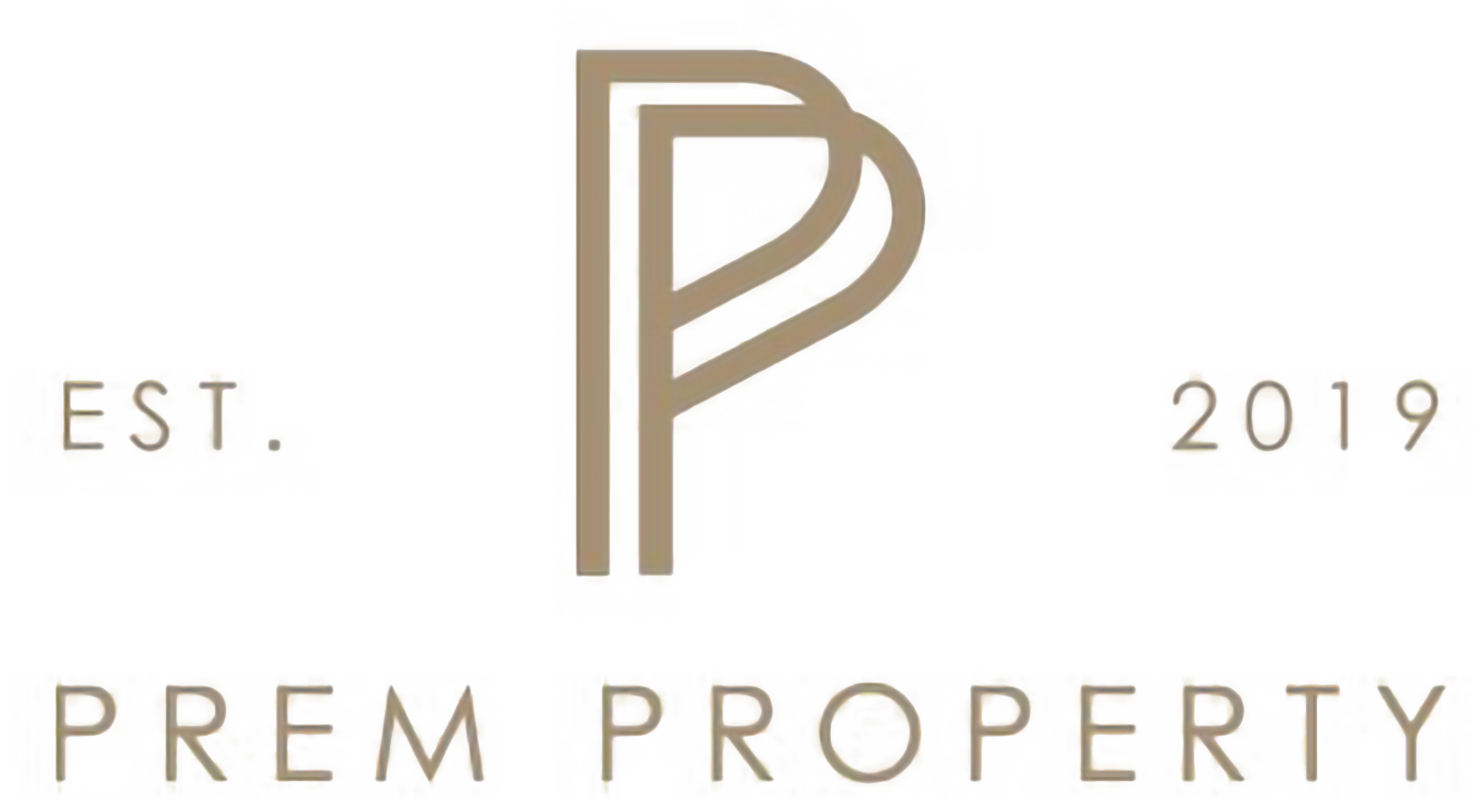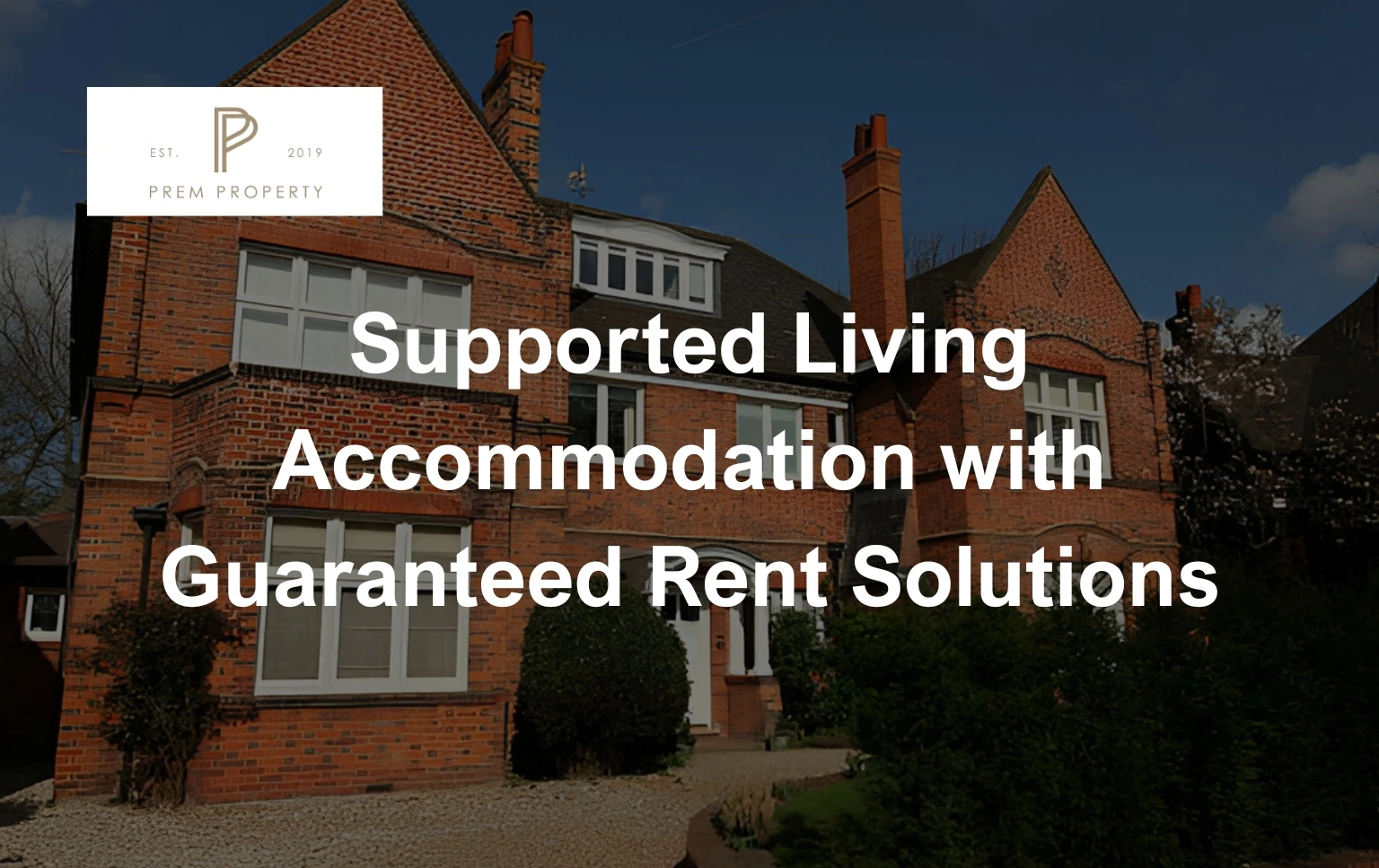Supported living accommodation is an essential part of the UK’s care sector, offering individuals with physical or mental health conditions, learning disabilities, and other care needs the chance to live independently, with the right level of support. The benefits of supported living are profound, enabling people to retain autonomy and independence while receiving the care they need to live fulfilling lives.
However, for landlords, the supported living model may present unique challenges in terms of property requirements, tenant expectations, and ongoing maintenance. Similarly, for care providers, ensuring that residents are housed in a comfortable, accessible and supportive environment is key to their wellbeing. Prem Property aims to bridge this gap by offering Guaranteed Rent Solutions, helping both landlords and care providers navigate the complexities of supported living accommodation.
This comprehensive guide will define supported living accommodation, explore the key differences between supported living and supported accommodation and explain how Prem Property’s services can help landlords and care providers create optimal living spaces for residents.
What is Supported Living Accommodation?
Supported living is a housing arrangement that allows individuals with varying levels of support needs to live as independently as possible. People who are placed in supported living environments typically have physical disabilities, learning disabilities, mental health challenges or may have experienced periods of homelessness or care in institutions.
What makes supported living different from traditional residential care homes is the level of independence granted to the residents. In supported living, individuals reside in self-contained accommodation, where they have their own living spaces (e.g., bedroom, bathroom, kitchen) and can carry out daily tasks with assistance as required. Care staff may be available to provide help with personal care, medication management, meal preparation, social integration, and other support needs, but the goal is always to empower residents to live as independently as possible.
This model of housing is designed to encourage personal growth, empowerment and community engagement, while making sure that individuals are not isolated from society. Supported living also offers flexibility in how care is delivered, ensuring that each resident receives personalised support tailored to their needs.
The Difference Between Supported Living and Supported Accommodation
Although often used interchangeably, supported living and supported accommodation are distinct concepts in the care sector. Both aim to support individuals who require assistance with daily living, but they differ in the level of independence and the type of environment in which they live.
Supported Living
In a supported living arrangement, individuals are given the independence to live in their own self-contained accommodation (a flat or house) while receiving varying degrees of support. The key principle behind supported living is that residents live as independently as possible, while receiving care and support when required. Supported living allows for more control over daily life, where individuals can manage tasks such as cooking, cleaning and budgeting, but with help available when necessary. The focus is on enabling residents to maintain as much independence as possible, and it can be ideal for people with learning disabilities, physical disabilities or mental health challenges.
Supported living accommodation may vary greatly depending on the individual’s needs, ranging from highly independent to requiring more intensive care. However, it always aims to promote self-sufficiency, independence and community involvement.
Supported Accommodation
On the other hand, supported accommodation typically involves more structured living arrangements. In this model, individuals may live in shared accommodation with communal areas such as kitchens, bathrooms, and living rooms. Supported accommodation often provides more intensive care, such as 24-hour supervision and personal assistance, and is generally used for individuals who have more complex needs that require a higher level of support.
People in supported accommodation may require constant care or supervision due to severe physical disabilities, mental health conditions, or ongoing needs for medication. The aim here is more about supervision and safety, as opposed to independence. Supported accommodation can be found in settings such as care homes, group homes, or hostels.
Key Differences
The main difference lies in independence versus supervision:
- Supported living promotes independence, allowing individuals to live in self-contained accommodation.
- Supported accommodation focuses on more structured environments with communal living spaces and 24/7 supervision or support.
Why the Demand for Supported Living is Growing
As of recent reports, the demand for supported living accommodation has never been higher. With the increasing prevalence of mental health conditions, disabilities and an aging population in the UK, there is a growing need for affordable, accessible, and appropriate housing for vulnerable individuals. The National Housing Federation reports that over 500,000 people in England rely on supported housing to live independently.
In 2023, a report highlighted the shortage of supported living accommodation across the country, with many care providers forced to turn individuals away due to lack of space. The National Audit Office indicated that there are currently no clear data on the number of supported housing units available across the country, which has led to challenges in addressing the demand.
The increased need for supported housing is exacerbated by:
- An ageing population: As the number of elderly individuals in the UK rises, more people are experiencing physical disabilities or mental health challenges that require supported housing solutions.
- Mental health crisis: A rise in mental health issues, including anxiety, depression, and stress-related disorders, has led to an increasing demand for housing that supports individuals’ emotional and psychological needs.
- Government cuts: Funding for supported accommodation schemes has been reduced in recent years, which has led to a shortage of affordable housing options for vulnerable individuals.
As the demand for supported living accommodation continues to grow, it is crucial for landlords and care providers to work together to bridge the gap in housing options. This is where Prem Property comes in.

How Prem Property Can Help Landlords and Care Providers
At Prem Property, we understand the challenges that landlords and care providers face in the supported living sector. That’s why we offer Guaranteed Rent Solutions that provide landlords with a steady, predictable income stream, while meeting the unique housing needs of care providers. Here’s how we can assist you:
1. Property Sourcing for Supported Living
We specialise in finding properties that suit the specific requirements of supported living. Our team works to ensure every property we source meets critical criteria, including:
- Accessibility: We ensure that the property is easy to navigate for residents with physical disabilities or mobility challenges.
- Safety: We guarantee that properties meet all legal and safety standards, such as fire safety and accessibility regulations.
- Comfort: We select properties that offer a peaceful and comfortable living environment to support the physical and emotional well-being of residents.
By sourcing the right properties, we help landlords provide accommodation that fosters independence and enhances residents’ overall well-being.
2. Personalised Housing Solutions
We recognise that each resident has unique care needs. That’s why we collaborate closely with care providers to ensure the properties we source can be adapted to suit these needs. We carefully consider factors such as:
- Mobility needs: We ensure the property is accessible for individuals with mobility challenges.
- Mental health considerations: We create calm, supportive environments for individuals with mental health conditions.
- Social engagement: We design spaces that encourage interaction and help combat loneliness by promoting social connections.
Our personalised approach ensures every resident has a home that meets their individual needs, enabling them to grow and maintain independence.
3. Location Matters: Community Integration
The location of supported living properties is key to their success. At Prem Property, we focus on sourcing properties in areas that offer:
- Excellent transport links: Properties with easy access to local services, employment opportunities, and social activities.
- Proximity to essential community services: We prioritise locations near healthcare facilities, shops, and recreational spaces.
- Safe and thriving neighbourhoods: We look for properties in areas where residents can engage in meaningful community activities.
We know that being part of a supportive, vibrant community can significantly enhance a resident’s quality of life.
4. Efficient Property Procurement Process
At Prem Property, we make the process of acquiring properties for supported living as seamless as possible. We take care of:
- Sourcing the right properties that meet your needs
- Negotiating lease agreements that work for both landlords and care providers
- Managing administrative tasks, so you don’t have to worry about paperwork
This makes the entire process straightforward and hassle-free for landlords and care providers.
5. Compliance and Maintenance Support
We ensure that every property we source complies with all legal and regulatory standards for supported living. We handle:
- Regular property inspections to ensure safety and quality
- Ongoing maintenance to keep the property in top condition, providing a comfortable environment for residents
- Compliance with all relevant regulations, including health and safety, accessibility, and fire safety standards
This gives landlords and care providers peace of mind, knowing the properties are well-maintained and legally compliant.
6. Flexible Leasing Terms for Care Providers
We understand that care providers often require flexibility in leasing arrangements. At Prem Property, we offer flexible leasing options to accommodate your changing needs. Whether you’re expanding services or adjusting the level of care provided, we can arrange leases that suit your requirements.

Frequently Asked Questions (FAQs)
1. How does guaranteed rent work for supported living properties?
With guaranteed rent, landlords receive a fixed monthly income from Prem Property, regardless of whether the property is occupied or not. This means landlords don’t have to worry about void periods or rent arrears. We manage all aspects of the tenancy, including maintenance and compliance, while providing you with a consistent income.
2. What types of properties are suitable for supported living?
Supported living properties must be accessible, safe, and adaptable to meet the specific needs of residents. Ideal properties include self-contained flats or houses, which can be modified to accommodate mobility aids, disability-friendly facilities, or any special requirements. We help landlords find properties that meet the necessary standards for supported living.
3. How can supported living properties benefit landlords?
Landlords benefit from guaranteed rent, which provides a predictable, steady income with minimal risk. By renting properties for supported living, landlords enjoy the security of long-term tenancies with reliable tenants. Supported living properties usually require less management, as Prem Property takes care of tenant placement, maintenance, and compliance.
4. How does Prem Property ensure that residents’ needs are met in supported living accommodation?
We work closely with care providers to understand each resident’s unique support needs, ensuring that the accommodation is suitable for their physical, emotional, and social well-being. Our properties are sourced and modified (if necessary) to meet accessibility, safety, and comfort standards, all while promoting independence and community integration.
5. Can Prem Property help landlords and care providers with flexible leasing terms?
Yes, Prem Property offers flexible leasing options tailored to the specific demands of supported living services. We understand that care needs can evolve over time, and we can adjust lease agreements to accommodate these changes. This flexibility ensures both landlords and care providers can adapt to shifting service requirements with ease.
6. What is the typical duration of a tenancy for supported living properties?
Tenancies for supported living properties generally tend to be longer-term arrangements. Care providers often prefer longer tenancies to ensure stability and continuity of care for residents. Prem Property ensures that tenancy durations align with both the landlord’s preferences and the care provider’s operational needs.
Final Thoughts: The Future of Supported Living
Supported living is essential for empowering individuals with care needs to live independently, and the demand for such accommodation is set to rise. At Prem Property, we offer comprehensive solutions that meet the needs of both landlords and care providers. By offering Guaranteed Rent Solutions, we provide a reliable income for landlords while ensuring that care providers have access to high-quality, supportive accommodation for their residents.
If you’re a landlord or care provider in the West Midlands or Greater London, Prem Property is here to help you navigate the complexities of supported living. With our expert services, you can ensure that vulnerable individuals are housed in environments that promote independence, growth, and community engagement, all while securing a stable and profitable income.

